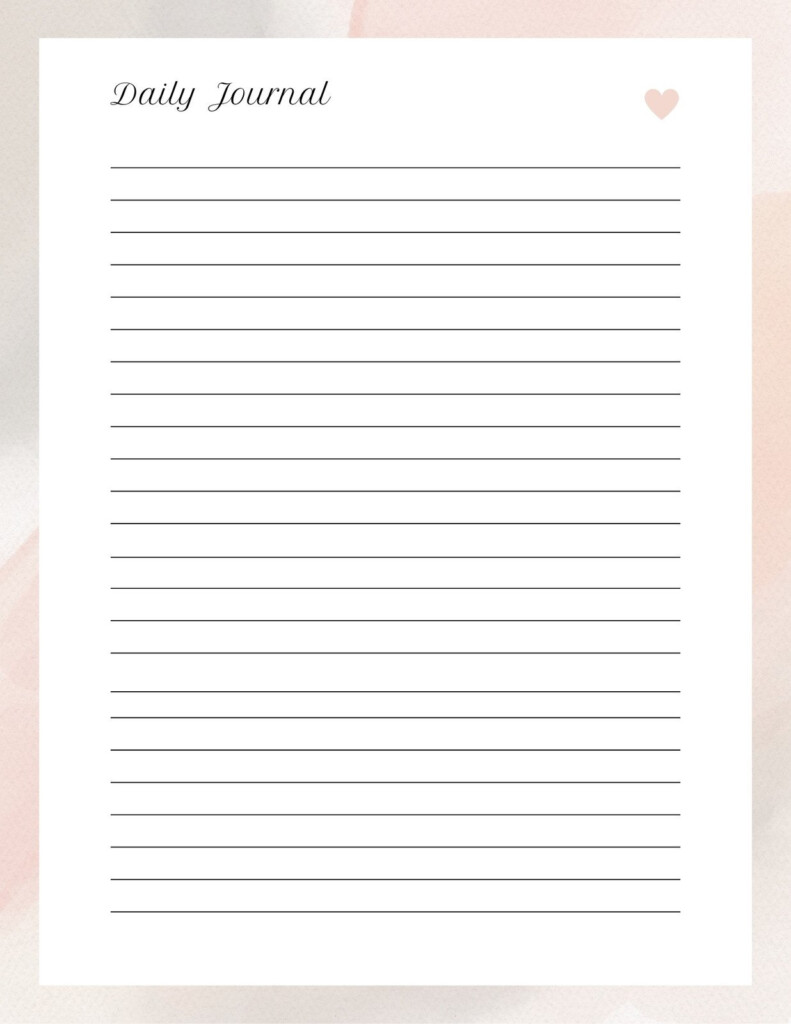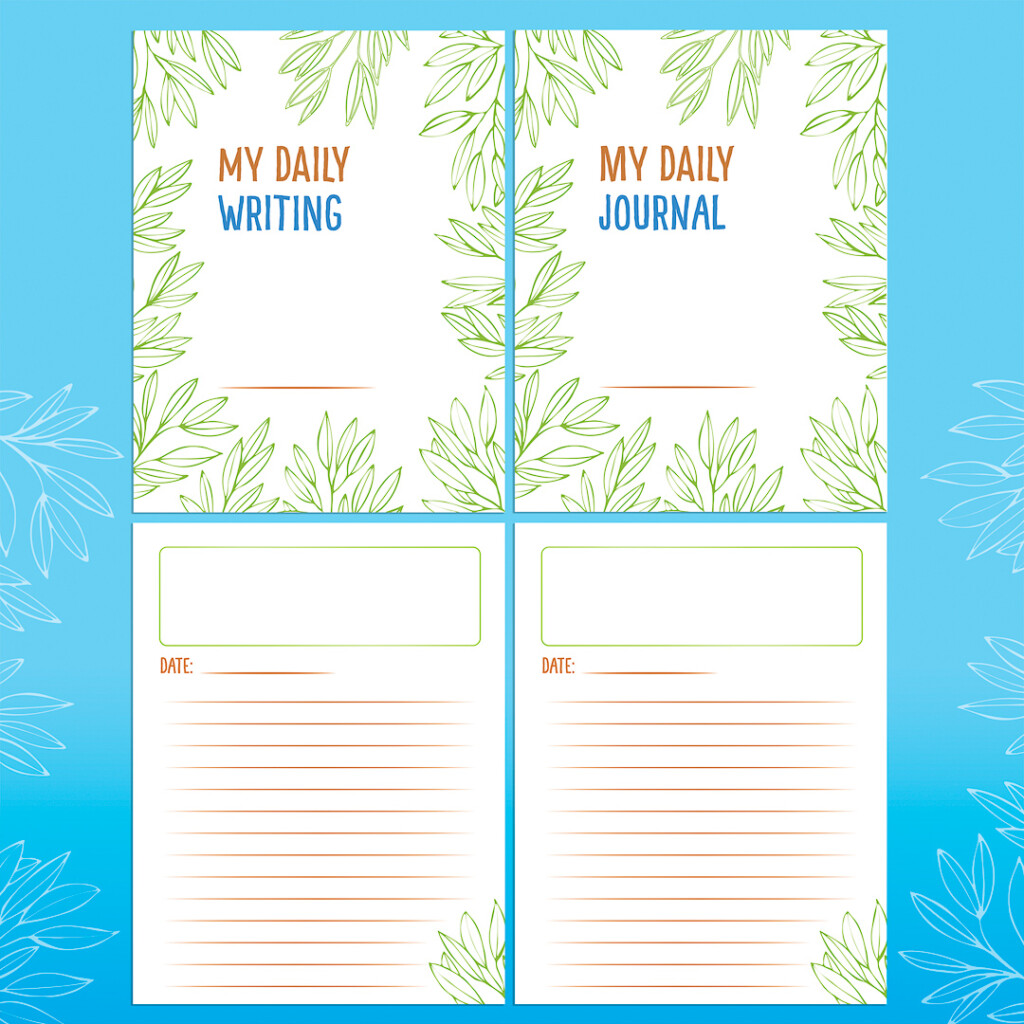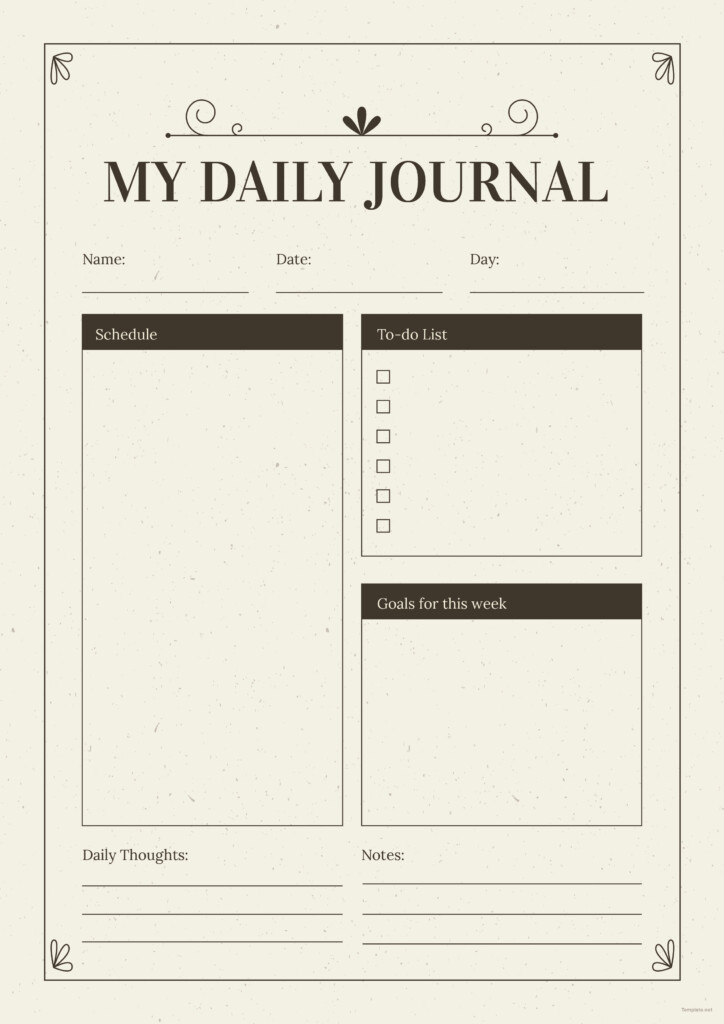How To Design Journal Template – Journaling is a effective device for company, imagination, and individual growth. However, it can really feel overwhelming without a clear framework. That’s where journal layouts come in– a ready-to-use structure to help you organize your thoughts and improve your journaling experience. How To Design Journal Template.
What Are Journal Templates?
Journal templates are pre-designed layouts that supply a structured style for journaling. Whether you’re planning your day, tracking routines, or assessing life, these layouts function as a structure, making journaling extra available and reliable.
Why Use Journal Templates?
Without a structured style, journaling can feel disorderly. Themes simplify the process by providing a well-thought-out style, ensuring you stay focused and constant with your journaling practice.
Benefits of Using Journal Templates
- Improving Your Process: Journal design templates conserve time by eliminating the need to develop formats, allowing you to focus on your jobs and goals.
- Improving Productivity: A efficient journal improves time monitoring and guarantees you stay on top of your priorities.
- Enhancing Imagination and Consistency: Templates trigger creativity through special styles and help maintain consistency in your journaling regimen.
Kinds Of Journal Templates
- Bullet Journal Templates: Perfect for producing to-do lists, tracking jobs, and taking care of tasks.
- Appreciation Journal Templates: Concentrate on cultivating positivity by videotaping things you’re grateful for each day.
- Daily Coordinator Templates: Suitable for scheduling your day and maintaining your jobs organized.
- Habit Tracker Templates: Screen practices like workout, analysis, or reflection effortlessly.
- Academic Journal Templates: Designed for pupils to track tasks, due dates, and research study timetables.
Attributes of an Efficient Journal Design Template
- Personalized Design: Adaptable designs allow you to tailor layouts to your demands.
- User-Friendly Style: Simple layouts guarantee convenience of use for both beginners and seasoned individuals.
- Digital vs. Printable Formats: Choose between eco-friendly electronic design templates or responsive paper options.
Exactly how to Select the Right Journal Design Template
- Define Your Function: Determine whether you’re journaling for efficiency, creative thinking, or personal development.
- Examine Your Demands: Select themes that line up with your objectives and daily activities.
- Consider Your Preferred Medium: Select in between electronic devices or typical paper journals based on your convenience degree.
Where to Find High-Quality Journal Templates
- Online Platforms: Sites like Etsy and Pinterest supply a wide variety of layouts.
- Apps Offering Pre-Designed Templates: Discover apps such as Idea and GoodNotes for integrated themes.
- DIY Options: Obtain creative deliberately your own design template for a customized touch.
Personalizing Your Journal Templates
- Including Personal Touches: Incorporate colors, stickers, or estimates to make your journal really one-of-a-kind.
- Tools and Resources for Customization: Use software like Canva or Adobe Illustrator to modify design templates easily.
Tips for Optimizing Your Journal Template
- Establishing a Regular: Dedicate a certain time every day for journaling to build consistency.
- Keeping Your Journal Organized: Usage tabs or areas to categorize various areas like job, individual life, and pastimes.
- Assessing and Showing Routinely: Take some time to assess your access to guarantee you’re straightened with your goals.
Digital vs. Paper Journal Templates
Benefits of Digital Templates
- Practical and green.
- Available throughout numerous devices.
The Charm of Paper Design Templates
- Tactile and distraction-free.
- Perfect for those that enjoy conventional journaling.
Picking What Works Best for You
- Experiment with both formats to locate the one that matches your way of life best.
Popular Devices for Creating Journal Templates
- Canva: Perfect for creating aesthetically magnificent layouts.
- Microsoft OneNote: Great for electronic note-taking and journaling.
- Idea: Perfect for productivity-focused design templates.
- GoodNotes: Superb for producing handwritten notes and digital coordinators.
Real-Life Applications of Journal Templates
- Personal Growth: Track your objectives, habits, and reflections to cultivate self-improvement.
- Specialist Usage: Plan jobs, manage tasks, and streamline conferences successfully.
- Academic Success: Organize studies, assignments, and timetables for much better scholastic performance.
Common Blunders to Stay Clear Of with Journal Templates
- Overcomplicating the Design: Keep layouts basic and functional to prevent burnout.
- Disregarding Capability: Focus on functionality rather than just looks.
- Not Upgrading On a regular basis: Occasionally evaluation and fine-tune your template to stay pertinent.
Conclusion
Journal layouts are a game-changer for any individual aiming to arrange their life while improving creativity and performance. With plenty of alternatives available, there’s a layout to fit every requirement– whether individual, specialist, or academic. Start checking out journal templates today and experience the improvement they bring to your routine!
Frequently asked questions
- Q: What are the most effective platforms to locate journal templates?
- A: Etsy, Pinterest, Idea, and GoodNotes are exceptional beginning points.
- Q: Can I develop my own journal layout?
- A: Definitely! Devices like Canva make developing personalized designs a breeze.
- Q: Are digital templates much better than paper ones?
- A: It depends upon your choice. Digital templates supply convenience, while paper ones provide a tactile experience.
- Q: Exactly how typically should I update my journal theme?
- A: Evaluation your design template month-to-month to ensure it aligns with your present goals and tasks.
- Q: What’s the easiest means to start journaling?
- A: Start with a simple pre-designed design template and progressively customize it as you expand comfortable.


